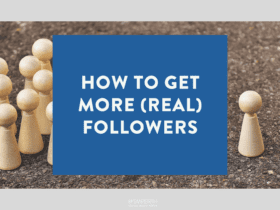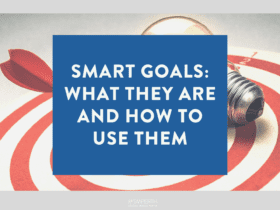In 2016 we saw social media platforms “mature” as business models, and one by product: they’re behaving increasingly like traditional media channels when it comes to advertising.
On targeting, flexibility and buying options alone, advertising on social channels is allowing brands to access key audiences with unrivalled precision and talk directly to them.
Given social media advertising is set to play a huge role in marketing in 2017, we’ve broken down some of the terminology you’re most likely to encounter along the way.
- Adverts: on Facebook, multiple advertisements exist within an advert set. When you are setting up a campaign, this is where you decide what your ad will look like by selecting imagery, entering copy, links etc.
- Advert Sets: on Facebook, an advert set represents a specific portion of your target audience according to: age, gender, location or interests.
- Analytics: the collection and analysis of performance data. For social media advertising analytics look for patterns in behaviour, what actions users completed, and how they interacted with different elements.
- Boost post: on Facebook, a smaller scale advertisement than a campaign. It’s the promotion of a specific post to “boost” visibility and engagement.
- Campaigns: on Facebook, when you create an advert you will be prompted to select an objective: in other words, what you want to accomplish, from website visits through to app installations and more. Once an objective has been defined, an ad campaign has been created.
- Call to action (CTA): directives that drive desired behaviours or actions. “Enter to win”, “Sign up to our newsletter”, “Like our page” etc.
- Carousel images: on Facebook and Instagram ads, it is a way of presenting a series of images and CTAs using a set of images that can be swiped through.
- Clickthrough rate (CTR): a common metric for reporting on the number of people who performed a CTA. It is calculated by comparing the number of clicks to impressions.
- Column ad: ads that appear in the right-hand column of the Facebook Newsfeed.
- Compliance: conformance with rules, regulations, or laws. Always familiarise yourself with the platform’s advertising rules and regulations before launching a campaign.
- Conversions: in social media marketing, it is a positive action that is taken on a website by a visitor from social media. The action demonstrates that the visitor is “converting” into a customer. Tracking conversions is crucial to properly attributing revenue to social media.
- Context card: on Facebook, a context card explains the benefits of your offer.
- Custom Audiences: on Facebook, it is a group that has a pre-existing relationship with your brand, as customers or contacts. Build an audience of just these people and deliver your ads to them direct.
- Dark Posts: normal-looking Facebook updates that are never shared organically and only serve as ads. You can create dark posts through the Facebook Ads power editor.
- Dashboard: on all platforms (general), it is the control centre for all aspects of account management: from insights through to advertising.
- Desktop ad: ads that appear on the Newsfeed on desktop.
- Display Ad: typically, small visual banners that are shown on websites. Common formats include images, flash, video, text and audio.
- Facebook Ads Manager: an app which allows marketers to track ad performance; edit published ads, ad budgets, and schedules; receive notifications; and create new ads.
- Facebook Pixel: a piece of JavaScript code for a website that enables marketers to measure, optimise and build audiences for social media ad campaigns.
- Geofilters: on Snapchat, are a type of Snapchat Filter specific to a location, and are often also associated with special occasions like an event. Brands can create custom geofilters to promote a product, service or event.
- Impressions: the number of times an ad, sponsored update, or promoted post is displayed.
- Lookalike Audiences: on Facebook, they are a way to reach new people likely to be interested in your business because they have a similar profile to existing customers or customers you are interested in.
- Mobile ad: ads that appear in the Newsfeed on mobile devices.
- Native advertising: material published to an online channel that resembles the brand’s editorial content but is actually paid for by an advertiser and intended to promote the advertiser’s product.
- Paid Reach: the number of individuals viewing your published paid content—ads, sponsored stories, promotional material.
- Paid Replay: on Snapchat, paid replays allow users to pay 99 cents to replay three Snaps of their choosing. This feature marked Snapchat’s first in-app purchasing option.
- Paid social media: refers to the use of social media for ad placement. The most common types of paid social media are native advertisements such as Facebook Ads, Twitter Promoted Tweets, LinkedIn Sponsored Updates, and YouTube sponsored videos. Other forms of paid social media include traditional display ads on social networks and Twitter Promoted Accounts.
- Photo Ads: on Instagram, ads that use a single photo displayed in the Feed, and marked as an advertisement.
- Promoted Accounts: a Twitter Ads feature that invites targeted users to follow a Twitter Handle and is used most often to quickly grow a following. Promoted accounts appear in the Home timeline, the Discover tab and profile pages.
- Promoted Trends: on Twitter, these are Ads that promote time-, context- and event-sensitive trends to the top of the Trends list on Twitter. They are marked as “Promoted.”
- Promoted Tweets: on Twitter, they are native advertisements targeting to a specific audience. They look almost identical to organic Tweets in users’ timelines but include a small “Promoted” marker.
- Power Editor: is ideal for larger advertisers who need to create multiple ads and retain a high degree of control over their campaigns. The browser plug in now allows you to create Instagram ads too!
- Retargeting/remarketing: an online advertising technique that involves targeting web visitors who expressed an interest in a brand’s products or services. This is accomplished by placing a small tracking tag on your website which allows marketers to target users as they visit other websites including news sites, blogs, or other social media.
- Return On Investment (ROI): a measure of an organisation’s effectiveness in social media. Social media ROI is calculated by dividing the total benefits of an investment by the sum of its costs.
- Sponsored Content: paid content.
- Sponsored Stories: paid content on LinkedIn.
- Targeting: direct advertising messages to users according to location, demographics, age, gender, interests, behaviour and much more.
- Video Ads: on Instagram, ads that use a (max) 60 second video displayed in the Feed, and marked as an advertisement.









LET’S CONNECT